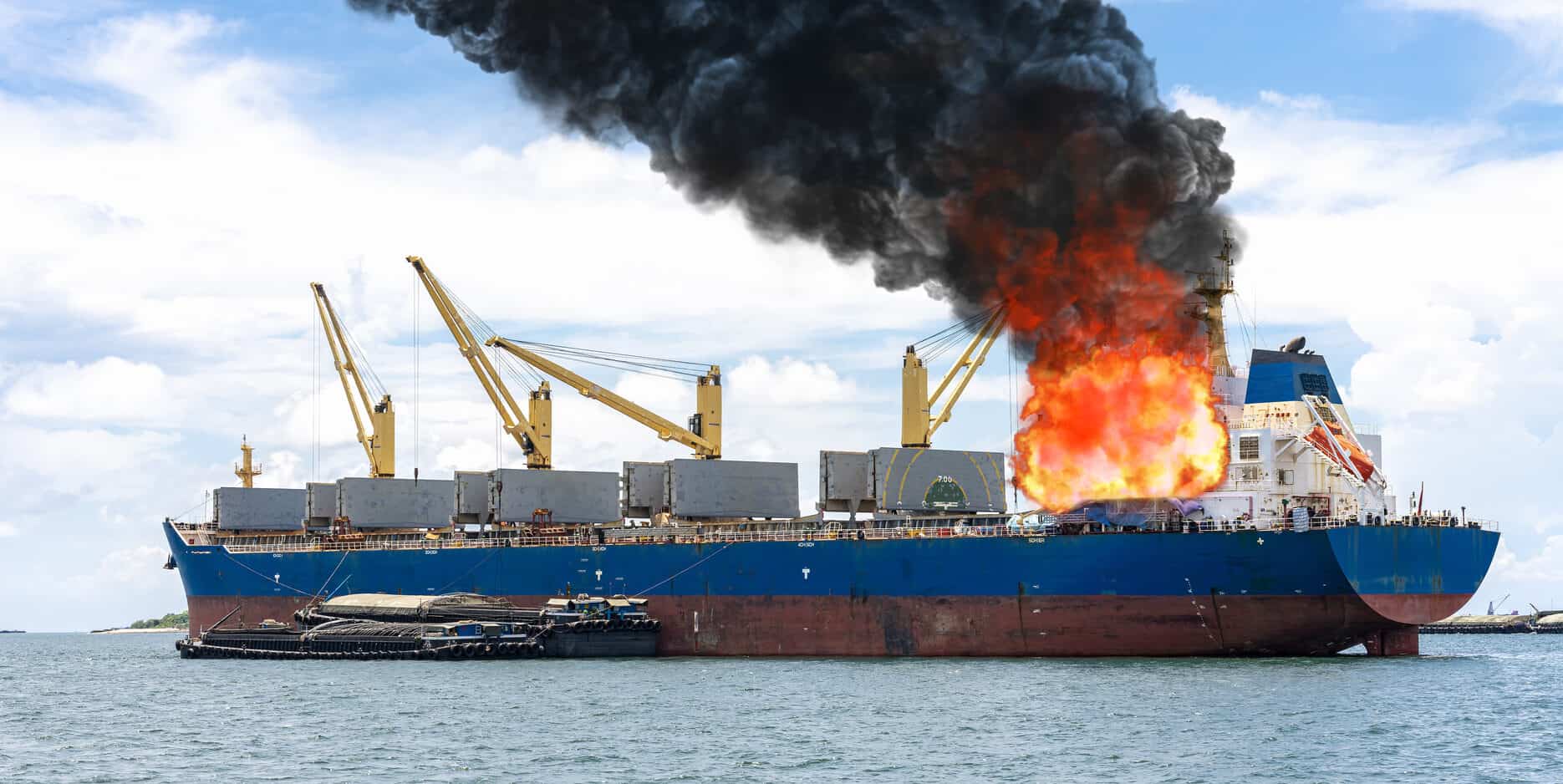Nicaragua – the heart of Central America – is a country with much potential to help you grow your business. Exporting to Nicaragua is not, however, without its challenges.
Notable economic growth in the late 2000s stalled in 2018 against a background of political and social unrest under an increasingly authoritarian government regime.
As Latin American cargo experts, our easy-to-understand guide to trade and export in Nicaragua will help you make sound business decisions.
Business opportunities to consider when exporting to Nicaragua
While current political and social unrest and the economic downturn make Nicaragua a challenging market to do business in, there are opportunities for export and much future potential.
Nicaragua’s Free Trade Agreements
Thanks to the Cafta-DR free trade agreement in place with several Central American countries, the USA remains Nicaragua’s largest trading partner. Nicaragua has also firmed up free trade agreements with Mexico, Dominican Republic, Panama, Chile, and the European Union. This shows Nicaragua is open to investment and developing solid international business-to-business links.
Furthermore, Nicaragua’s Central American location gives it ready access to major shipping lanes in the Atlantic and Pacific Oceans. This presents significant opportunities for exporters to ship cargo using short transit time transportation services.
Key sectors for exports to Nicaragua
Nicaragua has a highly organized and sophisticated private sector committed to a free-market economy, though it does require a stable and supportive government to reach its full potential.
You may choose to capitalize on Nicaragua’s popularity with tourists. Known as the ‘Land of Lakes and Volcanoes,’ it is a perfect destination for people wanting adventure and captivating scenery. Nicaragua’s tourism sector is poised for growth post-Covid-19, and further so when economic and political stability is resumed.
According to the US International Trade Administration, agro-industrial processing and auto-parts manufacturing are sectors poised for growth alongside tourism.
Top exports to Nicaragua
Manufactured goods, cosmetics, industrial machinery, and chemicals dominate Nicaragua’s imports, while clothing, gold, and coffee dominate exports.
Imports from the USA – Nicaragua’s biggest trade partner – totaled $2.1 billion in 2021, highlighting the opportunities for US-based exporters in particular.
The following are the primary exports to Nicaragua in 2021, according to the United Nations COMTRADE database, compiled by Trading Economics:
- Mineral fuels, oils, and distillation products ( $1.75 billion)
- Electrical and electronic equipment ( $874 million)
- Machinery and mechanical appliances ( $526 million)
- Pharmaceutical Products ($525 million)
- Knitted or crocheted fabric ($506 million)
- Knit apparel ($505 million)
- Plastics ($411 million)
- Motor vehicles, trucks, and cars ($362 million)
- Iron and steel ($269 million)
- Cereals ($263 million)
And these were the top US exports to Nicaragua in 2019, according to The Office of the United States Trade Representative:
- Mineral fuels ($492 million)
- Knit apparel ($196 million)
- Cereals (corn) ($98 million)
- Machinery ($95 million)
- Cotton ($79 million)
Challenges to consider when exporting to Nicaragua
The Nicaraguan market presents plenty of opportunities. It is important, however, to consider some challenges. These include:
- The inability to get a complete and reliable economic picture.
- Bureaucratic delays to shipments, often with arbitrary valuations and fines – some excessive.
- Frequent, lengthy audits for businesses, that can involve multiple government entities.
- A weak legal system, limiting the ability to contest any administrative action.
- Complicated and arbitrary food product registration.
- Limited transportation infrastructure to access remote areas.
Import restrictions and prohibitions
Below is a list of some prohibited goods or ones subject to restrictions, depending on their country of origin. Make sure you are meeting all the necessary requirements by working closely with a customs broker.
- Vehicles that are ten years or older. Exceptions include classic vehicles and certain ones used for cargo or public transportation.
- Used clothing and accessories.
- Used tires.
- Used ropes and cables.
- Certain used machinery.
- All types of toxic wastes or dangerous residues.
- Special permits are required for industrial chemicals, raw materials, animal feed, pesticides, fertilizers, firearms and explosives, foodstuffs, medicines, and X-Ray equipment
While there is a market for food imports as well as pharmaceuticals, cosmetics, medical devices, or hygiene products, foreign manufacturers must meet a number of requirements to obtain an import license, in addition to the permits mentioned above. These include obtaining a Certificate of Free Sale for product registration, issued in the country of origin by competent government sanitary authorities.
Furthermore, Nicaraguan law also requires that processed food products be marked with an expiration date – even those that typically have ‘Best By’ dates. Nicaraguan importers can assist their international suppliers in meeting the requirements.

Located on the Pacific Coast, Corinto is the principal port of Nicaragua and the biggest container terminal in the country.
Export to Nicaragua: Customs clearance
Bureaucracy can frustrate exports to Nicaragua. Customs procedures can be complex and lengthy. It, therefore, helps to understand the processes and challenges you may face.
The Central American Uniform Customs Code harmonizes customs procedures for Nicaragua, Guatemala, El Salvador, and Honduras. This includes uniform documents, customs information sent electronically, and electronic prepayment of charges, tariffs, and taxes. This familiarity may reassure you if you already conduct business elsewhere in Central America.
Be aware, however, that you may be required to complete a questionnaire and answer further questions to establish the proof of origin of your products.
Nicaragua’s Customs Authority (DGA) has been seeking ‘proof of origin’ even for products previously established as originating in the USA. Businesses have raised concerns that the information required includes sensitive business data or trade secrets. It remains an ongoing issue.
Customs Duties
If you are new to trading with Nicaragua, customs duties will be a key consideration.
If you are a US exporter, the free trade agreement means all consumer and industrial goods – and more than half of agricultural products – should enter Nicaragua duty-free. Tariffs on remaining agricultural products are set to be phased out over the next few years.
Most other products (95 percent) are subject to an external tariff of 15 percent or lower.
While customs duties tariffs are generally straightforward on paper, you need to be aware that bureaucratic delays in clearing shipments and the arbitrary use of taxes, fees, and fines can complicate the process and create unexpected trade barriers.
To get more information about customs duties, visit the DGA website.
Import requirements and documentation
There are a number of documents you will need when exporting goods to Nicaragua:
- Bill of lading.
- Packing list.
- Original invoice.
- Declaration of invoice authenticity.
- Permits issued by Nicaraguan authorities for food and beverages, medicines, and cosmetics.
- Certificate of origin.
All imports of non-processed food must be registered with the Ministry of Agriculture’s Agricultural Health and Sanitation Office.
In addition, products to be packaged in Nicaragua need a phytosanitary or sanitary certificate from the country of origin and the Nicaraguan Ministry of Health Food Inspection Office.
Sugar requires an import license from the Ministry of Development, Industry, and Trade.
Importers must be able to document the safety and effectiveness of medicines, cosmetics, and hygiene products and obtain a sanitary registration from the Ministry of Health Pharmaceutical Office.
Modes of transportation to and within Nicaragua
International trade with Nicaragua is carried out by land, sea, or air, depending on the origin of the product and other factors such as transit budget and urgency.
Maritime Facilities
Ocean transportation is the most common method of exporting to Nicaragua. The principal port for international trade is currently in Corinto on the Pacific Coast. A new deepwater port on the Caribbean coast is set to be operational by 2028. It will boost the country’s cargo capacity, reducing reliance on major hub ports in Honduras and Costa Rica.
Airport infrastructure
The main airport for cargo is centrally located in Nicaragua’s capital city, Managua.
Road network
Be aware of the limitations of the road network in Nicaragua. While it is relatively well-developed on the west coast and undergoing further improvement, it remains sparser on the east coast. There are few connections between east and west, and accessing remote areas of Nicaragua can be challenging.
The most important highway is the Pan-American Highway. It runs from north to south and links Nicaragua with Honduras and Costa Rica.
Rail transport
Finally, there is no railway service in the country, with most lines closed in the 1990s and the last in 2001.
Export to Nicaragua now!
There are many challenges in exporting to Nicaragua, and you may be weighing up the pros and cons. There is significant demand for certain products, and there is much future potential with a stabilized government and economy.
Latin American Cargo understands the Nicaraguan market and culture. We are the ideal logistics partner to help you navigate the landscape, break into the market, and have business success.


 LAC Team
LAC Team


